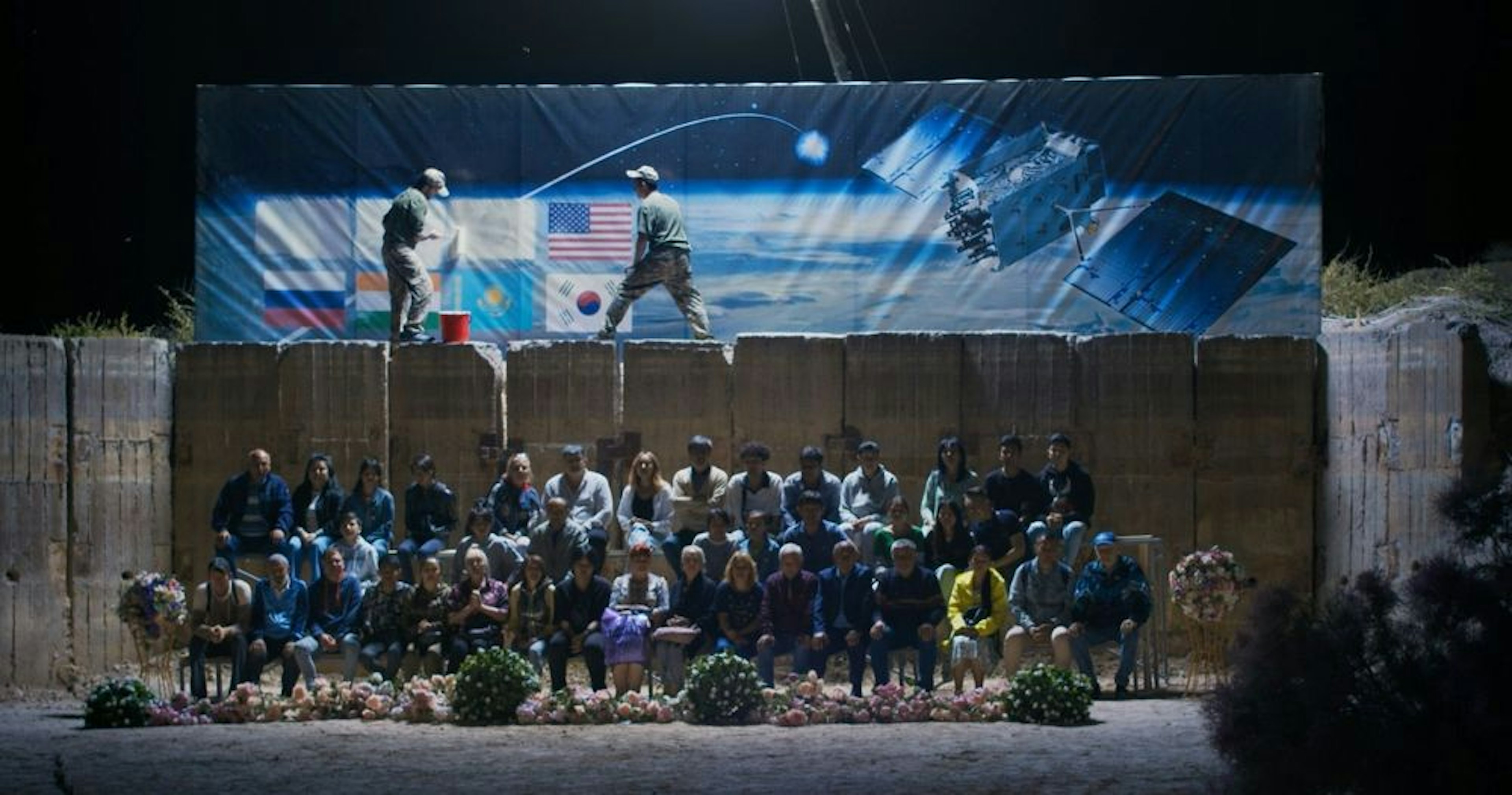Shokouk: A Cosmicomedy in Four Acts

Shokouk: A Cosmicomedy in Four Acts
Rouzbeh Akhbari, Felix KalmensonA vertiginous odyssey of transhistorical vignettes exploring infrastructures of space travel and the cosmic imaginary. Documenting interstellar machinations connecting 12th century Persia to a fictional Chinese company ‘Skybridge Unlimited’ at the edges of Russia’s Baikonur Cosmodrome, Shokouk traces an anachronistic loop of historical facts and archival fabulations to question the violence and sublimity implied through conquests of the outer wilds.
Tuesday–Saturday, 12:00–5:00pm
440-401 Richmond St West Toronto, ON M5V 3A8
Street level entrance, ramp, elevator, automatic doors, door width 34”. Gender neutral accessible (32”+) washrooms, stall, no automatic door. No accessible parking on site. To access Bachir/Yerex, use either the stairs or elevator to the 4th floor.
For a map of Bachir/Yerex Presentation Space, click here
Images Festival is committed to providing an accessible festival and continues to work to reduce barriers to participation at our events. This year, we are implementing a COVID-19 policy to reduce the risk of COVID-19 transmission for all, and to prioritize the participation of people who are disability-identified, immunocompromised, or part of an otherwise vulnerable group.
The following guidelines will be in place: Self-Assessment: We ask that staff and participants screen themselves for COVID-19 before visiting the exhibition.
Shokouk: A Cosmicomedy in Four Acts is a transhistorical hybrid documentary that traces a polyphony of characters, sites, and encounters related to infrastructures of space travel and cosmic imaginaries. Following a vertiginous narrative connecting various cosmic machinations from the 12th century Persianate world to the Russian Baikonur Cosmodrome in the present moment, the film weaves historical facts and archival fabulations to question our common perceptions of time and space.
A crowd gathers to watch a mock televised rocket launch, staged to resemble the Cosmodrome in the aftermath of its closure to foreigners following Russia’s full-scale invasion of Ukraine. The spectators perform a “gossip score” developed by Ulyana Toporovskaya and Lera Kim based on field research in the Ulytau Region, Kazakhstan—a region lying within the flight path and “fall zones” of international launches. As the rockets ascend, at times exploding in mid-air, they release large volumes of highly toxic heptyl fuel that blankets several hundred thousand square kilometers. The vastness of territories affected, multiplied by the protracted temporality of decades of launches, shifts the scales of violence from the original launch event into a delayed destruction dispersed across time and space—a slow corporeal and environmental violence.
Tracing the spectral waves, we arrive at the Kazakh city of Baikonur during the genesis of Russian/Soviet colonial cosmic imaginaries. We meet the archival fiction of Ukrainian researcher Valery Pimenov, who in 1978 created the character of Nikifor Nikitin, a Russian tradesman who in 1848 is serving a sentence of hard labor in the Kazakh copper mines for the crime of making seditious speeches against the Tsar. According to Pimenov’s fabricated fragment from the Moscow Provincial Gazette of the same year, Nikitin had attempted to incite the public to evade the Tsar’s rule by fleeing to the moon—thus making him the first cosmonaut.
Nikitin then ejects us to the present, where a karaoke event celebrating the inauguration of a fictional Chinese infrastructure company “Skybridge Unlimited” is held in Uzbekistan. Filmed on a Chinese-owned sand mine bordering a central Asian branch of China’s Belt and Road railroad, the karaoke takes the shape of a duet between the 12th and 13th century astronomers and polymaths, Omar Khayam and Nasirdin Al-Tusi. Their dialogue takes the form of speculation on the variable luminosity of Polaris and its correlation with tellurian politics during the Reconquista of the Iberian peninsula and the alleged demise of the Islamic Golden Age.
The spatio-temporal scale shifts once again and we arrive in geostationary orbit aboard an abandoned MIR Space Station. The camera floats in zero gravity towards a 10th century Arabic astrolabe as audio excerpts derived from Andrei Ujică’s 1997 movie.
Out of the Present play in the background. Heard through this dissonant noise, Sergei Krikalev—the lone cosmonaut stuck on MIR for 313 days following the dissolution of the USSR—reflects on the sublimity of seasonal changes against the backdrop of dizzying geopolitical shifts back on the planet. Shokouk ends with an anachronistic loop that connects the teachings of Italian physicist Carlo Rovelli about the fragmented essence of time to the original televised rocket launch in Baikonur.
Rouzbeh Akhbari
Rouzbeh Akhbari is an artist working in video installation and film based between Toronto and Lisbon. His practice is research-driven and usually exists at the intersections of storytelling, political ecology, critical border studies, and human geography.
Felix Kalmenson
Felix Kalmenson is an artist and filmmaker. Kalmenson’s work variably narrates the liminal space of a researcher’s and artist’s encounter with landscape and archive.


